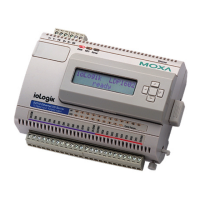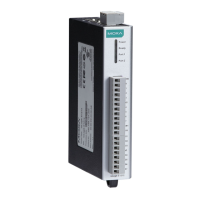ioLogik E2210 User’s Manual Introduction
1-2
Overview
(shown with and without optional LCM)
The ioLogik E2210 is part of the E2000 line of ioLogik Active Ethernet I/O servers, which are designed
for intelligent, pro-active status reporting of attached sensors, transmitters, transducers, and valves over a
network. The ioLogik E2210 also supports an optional hot-pluggable Liquid Crystal Display Module
(LCM), as shown above, to view and configure device settings.
Traditional Remote I/O
Ethernet remote I/O solutions have been on the market for a long time. Traditional solutions are
“passive,” in the sense that I/O servers wait passively to be polled by a host computer. The response time
in this type of setup, however, tends to be on the order of seconds. The “passive” remote I/O structure is
simply inadequate for Data Acquisition and Control (DAC) systems that require an efficient, real-time
I/O solution with a response time on the order of hundredths of seconds.
Active Ethernet I/O
MOXA’s Active Ethernet I/O line was developed specifically to address the limitations of the traditional
passive approach. Rather than having the host computer poll the I/O device server over the network for
the status of each I/O device, the Active Ethernet I/O server intelligently sends the host computer status
information only under specified conditions. This is a report by exception approach, which greatly
reduces the load on CPU and network resources. Network packets are far fewer in number and far smaller
in size, since I/O information is only sent when necessary, and only information from the specified I/O
device is sent. Based on field tests of an ioLogik E2000 series server used in an RFID system, 50 ms is the
typical response time over a 100 Mbps Ethernet network. MOXA’s active I/O messaging system uses TCP
or UDP for I/O messaging and supports sending messages to up to ten host computers simultaneously.
In addition to providing intelligent status reporting, Active Ethernet I/O servers are backwards
compatible, with all of the functions and capabilities of traditional passive remote I/O servers.
Click&Go
MOXA developed the Click&Go logic control interface for easy configuration and deployment of Active
Ethernet I/O. Click&Go’s intuitive, graphical interface lets administrators use simple IF/THEN
statements as rules to determine how the Active Ethernet I/O server responds to different I/O conditions.
For example, the Active Ethernet I/O server could be programmed to turn on an attached switch as well as
send an e-mail or SNMP trap when an attached event counter reaches a certain value. Click&Go makes it
easy to define a set of these rules, which will become the basis for your Active Ethernet I/O system.

